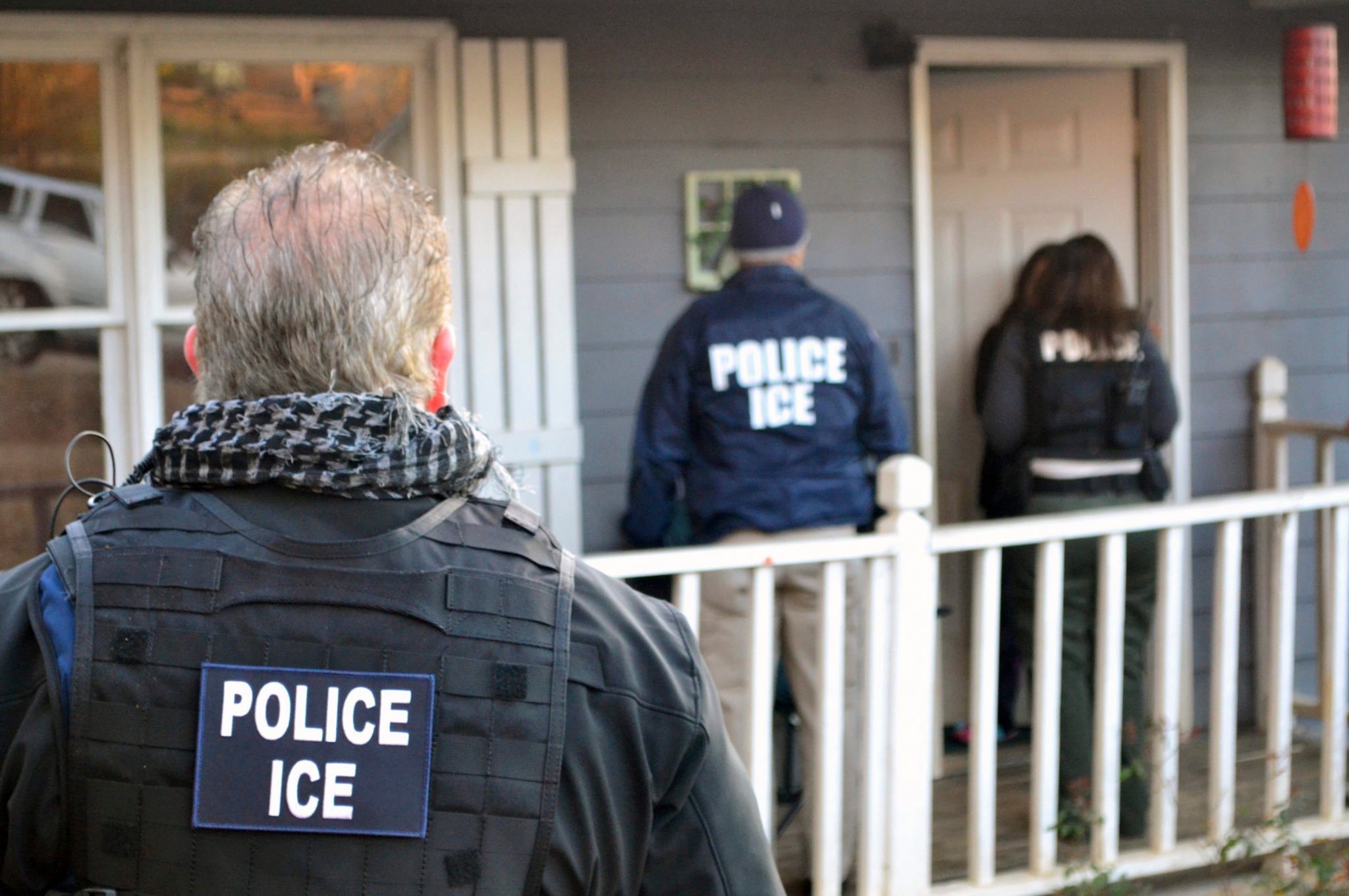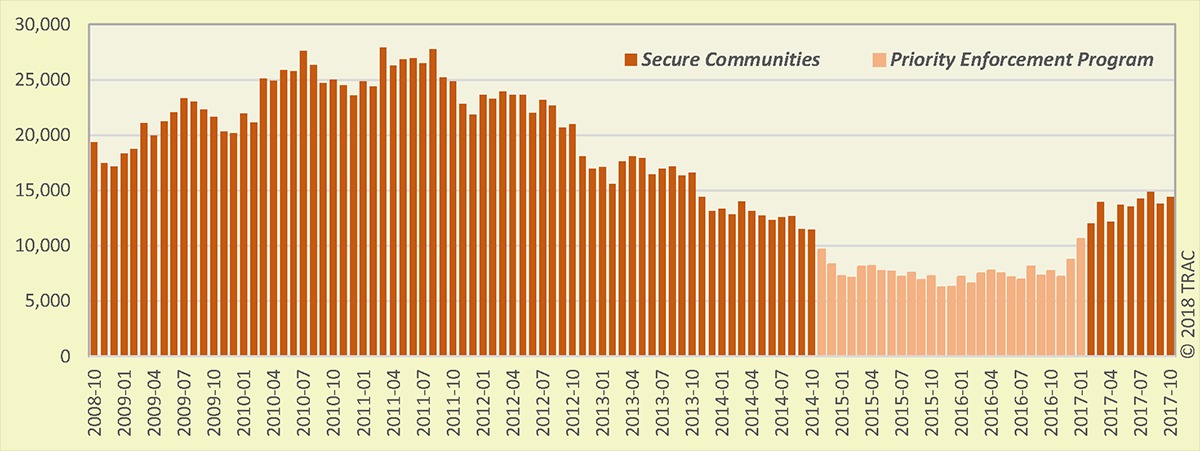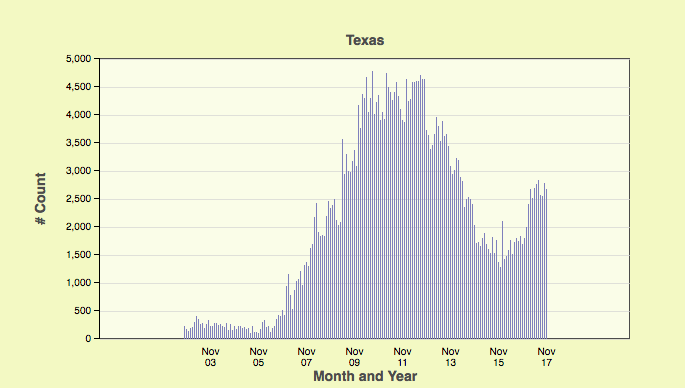
ICE Issues More Detainers in Texas, Withholds Crucial Data
In the past, ICE regularly wasted local resources by not following up on its own detainer requests. Now, that information is secret.

Above: ICE agents
The use of immigration detainers — requests for jails to hold immigrants for an extra 48 hours so they can potentially be deported — has spiked in Texas since President Trump took office, according to data released last week by the research organization TRAC. Thanks to Texas’ “sanctuary cities” ban, county jails across the state are forced to comply with the growing influx of once-voluntary requests.
But starting last year, Trump’s Immigration and Customs Enforcement (ICE) began withholding key information about the effectiveness of detainers, and the agency is fighting TRAC in court to continue withholding the information. In the past, ICE released statistics on how frequently its agents followed up on detainers and picked up immigrants in jail. Surprisingly, ICE regularly failed to act on its detainers, leaving people, including parents of young children, locked up for extra time and county jails picking up the tab.

“The withholding of these public records has a direct impact on the public’s ability to be informed about the government’s immigration policy and actions,” wrote the Syracuse University professors who run TRAC in their ongoing open records lawsuit against ICE.
From November 2016, when Trump won the presidential election, through November 2017, the use of detainers rose nationally by 89 percent and in Texas by 57 percent, the newly released statistics show. But the information blackout means there’s no accounting for how many immigrants were picked up by ICE or later deported.
In Texas from 2003 to 2016, ICE took custody of only a little more than half of migrants with detainers — leaving the rest to linger in jail to no end.

That extra time locked up can hit Texas county budgets hard. In 2017, Texas counties spent about $72 million detaining inmates with ICE holds. Some of that money would’ve been spent anyway, but inmates with detainers are generally held longer because they’re often denied bond, on top of spending the extra 48 hours waiting on ICE.
In an anti-SB 4 op-ed last year, a quintet of Texas sheriffs wrote that the “sanctuary cities” ban would exacerbate an already uneven arrangement. “SB 4 provides zero support to local officials,” they wrote. “Despite the federal government’s promises, they have only reimbursed a tiny fraction of the costs to local communities and counties. Ultimately, it is our local taxpayers that will pay even more for this unfunded state mandate.”
Last year, ICE also began refusing to release information about the number of deportations in which a detainer was involved. From 2013 to 2015, according to TRAC, some 460,000 detainers were issued, while only 71,000 deportations involved a detainer. That suggests a rather constricted detainer-to-deportation pipeline: a rate of about 15 percent.
An ICE official told the Observer that the 15 percent rate is inconclusive, because multiple detainers can be placed on a single person, and because a detainer placed in one year may lead to deportation years later, for example if an immigrant serves a prison sentence. Of course, it’s also possible that detainers have become more effective under the Trump administration, but ICE isn’t releasing the data that could prove that.


